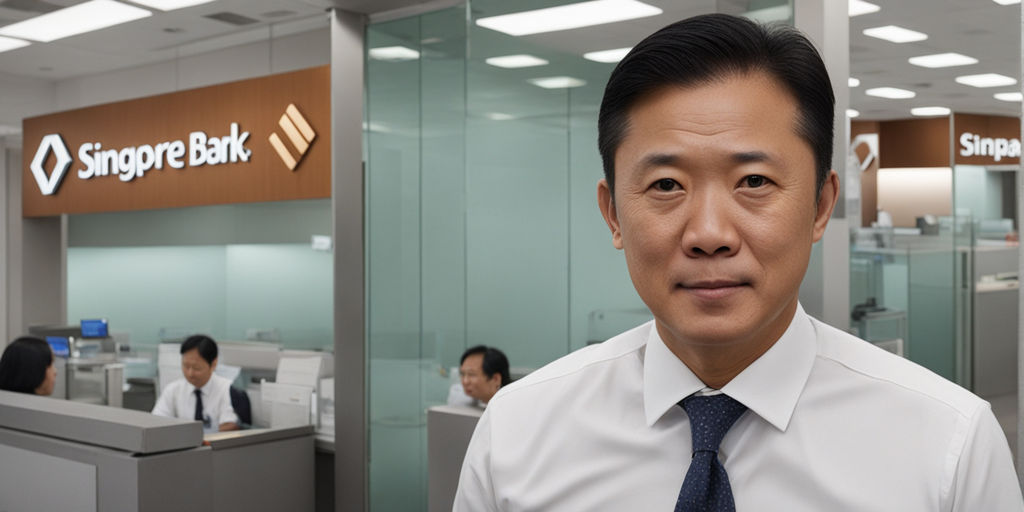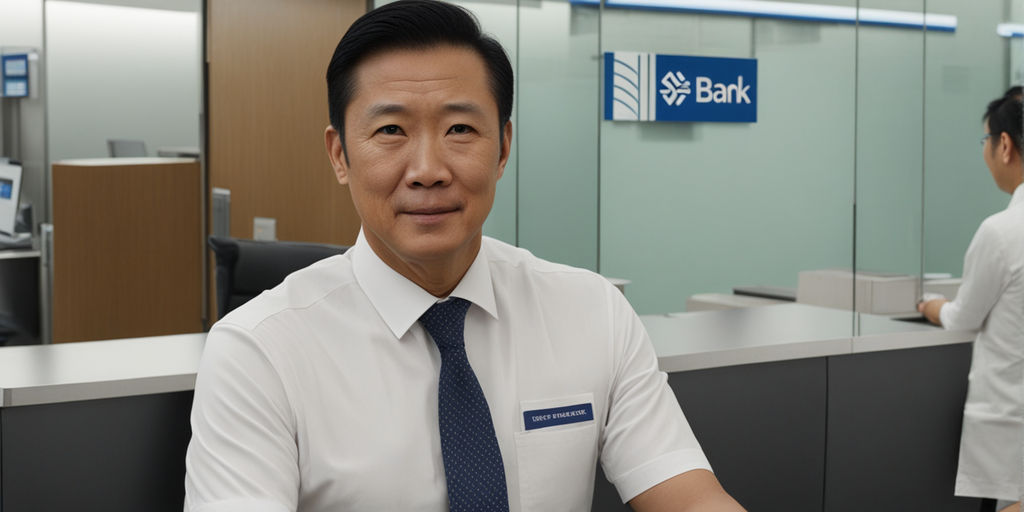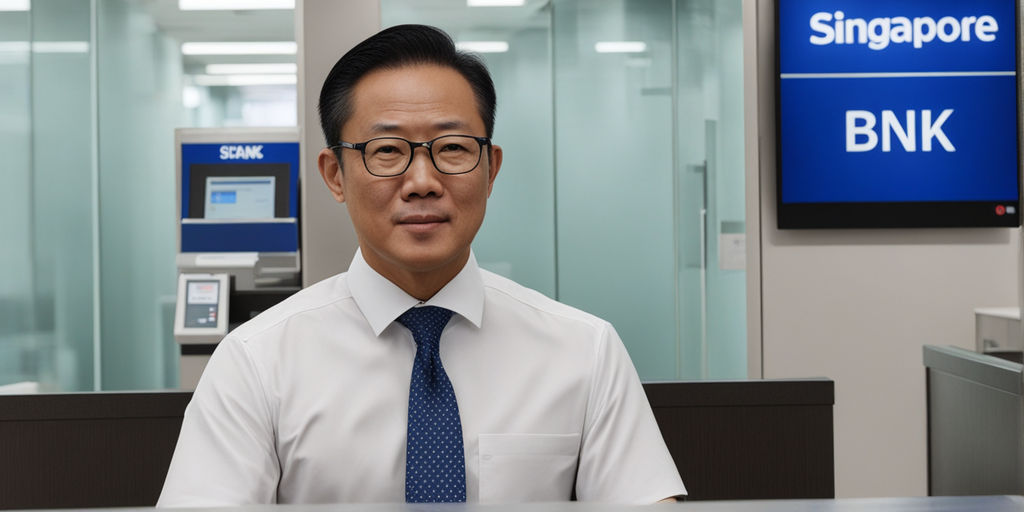
What’s better between Syfe vs Stashaway in Singapore? Are you ready to start investing but feel overwhelmed by the options available? Robo advisors may be the solution for you.
These digital platforms use algorithms to automate investment decisions and provide portfolio management services. In Singapore, two of the most popular robo-advisors are Syfe and Stashaway.
But which one is best for you?
In this article, we will compare Syfe and Stashaway in Singapore to help you make an informed decision. We will provide an overview of robo advisors in Singapore, and company profiles of Syfe and Stashaway.
It includes investment products and portfolios, performance and returns. In addition, the fees and costs, investment strategies and asset allocation, risk management and customisation. Moreover, there’s the user experience accessibility and additional investment considerations. By the end of this article, you should better understand which robo advisor is right for you based on your investment goals and preferences.
Key Takeaways
- Syfe and Stashaway are popular robo-advisors in Singapore that use algorithms to automate investment decisions and provide portfolio management services.
- Syfe is best for investors seeking a more personalised approach to investing, while Stashaway is best for those seeking a diversified portfolio to minimise risks.
- When choosing between Syfe and Stashaway, consider factors such as investment products and portfolios, performance and returns, fees and costs, investment strategies and asset allocation, risk management and customisation, user experience and accessibility, and additional investment considerations.
Syfe vs Stashaway in Singapore: The Overview of Robo Advisors

Are you interested in investing but don’t have the time or expertise to manage your portfolio? Robo advisors in Singapore are a great solution for you. These digital platforms use algorithms to provide automated investment services that are easy to use, low-cost, and accessible to everyone.
Rising Popularity of Automated Investment Platforms
Robo advisors such as Syfe, StashAway, Endowus, AutoWealth, DBS digiPortfolio, OCBC RoboInvest, and Kristal.AI are gaining popularity in Singapore because they offer a hassle-free way to invest your money. They provide a user-friendly interface, a variety of investment options, and low fees compared to traditional financial advisors.
According to a report by the Monetary Authority of Singapore (MAS), the assets under management (AUM) of robo advisors in Singapore have grown from SGD 0.26 billion in 2016 to SGD 3.3 billion in 2020. This shows the increasing demand for digital investment platforms in Singapore.
Regulation and Security
Robo advisors in Singapore are regulated by the MAS under the Securities and Futures Act (SFA) and the Financial Advisers Act (FAA). This means that they have to meet specific requirements and standards to ensure the protection of investors’ interests.
In addition, robo-advisors use secure technology to protect your personal and financial information. They also use custodian accounts to hold your investments, which means that your money is safe even if the robo-advisor goes bankrupt.
Overall, robo advisors in Singapore are an excellent option for investors who want to save time and money while still having access to a variety of investment options. With the increasing popularity of these digital platforms and their regulation by the MAS, you can invest with confidence, knowing that your interests are protected.
Syfe vs Stashaway in Singapore: Company Profiles

When choosing between Syfe and Stashaway, it’s essential to understand the company profiles of both robo-advisors. Each has its own investment philosophy and approach, which may appeal to different types of investors.
Syfe’s Investment Philosophy and Approach
Syfe is an automated investment platform that uses intelligent beta strategies to optimize returns. The company’s investment philosophy is based on economic regime-based asset allocation (ERAA), which means that investments are allocated based on the current economic environment.
Syfe’s algorithms use a combination of factors to determine the optimal portfolio mix, including macroeconomic indicators, market trends, and asset valuations. The company’s ERAA framework is designed to help investors achieve higher returns with lower risk.
Stashaway’s Financial Vision and Methodology
StashAway is a robo-advisor that uses smart beta and dimensional investing to build portfolios. The company’s financial vision is to democratize wealth management and make investing accessible to everyone.
StashAway’s methodology is based on three principles: diversification, optimization, and personalization. The company uses smart beta to optimize returns, while dimensional investing is used to diversify portfolios across different asset classes.
StashAway also uses an economic regime-based asset allocation (ERAA) framework to adjust portfolios based on changing market conditions. This approach is designed to help investors achieve their financial goals while minimizing risk.
Overall, both Syfe and Stashaway offer unique investment strategies and automated approaches to wealth management. It’s up to you to decide which company’s investment philosophy and methodology aligns with your financial goals and risk tolerance.
Syfe vs Stashaway in Singapore: Investment Products and Portfolios

When it comes to investment products and portfolios, both Syfe and Stashaway have a lot to offer. Let’s take a closer look at what each platform has to offer.
Syfe’s Range of Portfolios
Syfe offers a range of portfolios that cater to different investment goals and risk appetites. The Equity 100 portfolio, for example, is designed for investors who are looking for long-term growth and are comfortable with a higher level of risk. This portfolio is made up entirely of global equities and has historically delivered strong returns.
For investors who are looking for a more balanced portfolio, Syfe offers a range of other portfolios that include a mix of equities and bonds. The Fixed Income portfolio, for example, is designed for investors who are looking for a stable source of income and are willing to accept a lower level of risk.
In addition to equities and bonds, Syfe also offers a range of other investment options, including REITs, cash management, and gold. This allows investors to build a diversified portfolio that is tailored to their individual needs and goals.
Stashaway’s Diversified Investment Options
The philosophy is based on diversification, and the platform offers a range of investment options to help investors achieve this. Stashaway’s portfolios are made up of a mix of asset classes, including stocks, bonds, and commodities.
Stashaway also offers a range of different portfolio types, including a Diversified portfolio, a Growth portfolio, and an Income portfolio. The Diversified portfolio is designed for investors who are looking for a balanced portfolio that includes a mix of different asset classes. The Growth portfolio, on the other hand, is for investors who are willing to accept a higher level of risk in exchange for the potential for higher returns. The Income portfolio is for investors who are looking for a stable source of income.
In addition to these portfolio types, Stashaway also offers SRS funds and a range of ETFs from different providers. This allows investors to build a diversified portfolio that is tailored to their individual needs and goals.
Overall, both Syfe and Stashaway offer a range of investment products and portfolios that cater to different investment goals and risk appetites. Whether you are looking for long-term growth or a stable source of income, both platforms have something to offer.
Syfe vs Stashaway in Singapore: Performance and Returns

Are you curious about how Syfe and Stashaway perform in terms of returns? Let’s dive into the performance of these two robo-advisors.
Analysing Syfe’s Historical Performance
Syfe offers a range of portfolios with varying risk levels, including the Equity100 portfolio, which invests in global equities. According to Syfe’s website, Equity100 has delivered an impressive average annual return of 22.1% since its inception in 2019. This is significantly higher than the average return of the MSCI World Index, which is around 8% per year.
Syfe’s other portfolios have also performed well historically, with their REIT+ portfolio delivering an average annual return of 11.5% since its inception in 2019. Syfe’s Fixed Income portfolio, which invests in global bonds, has an average annual return of 4.5% since its inception in 2019.
Evaluating Stashaway’s Projected and Actual Returns
Stashaway offers a range of portfolios with varying risk levels, including the Stashaway Simple portfolio, which invests in global equities and bonds. According to Stashaway’s website, the Simple portfolio has projected a return of 7.2% per year since its inception in 2017 and has delivered an actual return of 11.3% per year as of 2022.
Stashaway’s other portfolios have also performed well historically, with their highest-risk portfolio delivering an actual return of 17.2% per year as of 2022. Stashaway’s portfolios also pay out dividends, which can further boost your returns.
Overall, both Syfe and Stashaway have delivered historically solid performance with the potential for higher returns in the long term. However, it’s essential to keep in mind that past performance is not a guarantee of future returns, and you should always do your own research before making any investment decisions.
Syfe vs Stashaway in Singapore: Fees and Costs

When it comes to choosing the best robo advisor, fees and costs are important factors to consider. In this section, we will take a closer look at the fee structures of Syfe and StashAway.
Understanding Syfe’s Fee Structure
Syfe offers a simple and transparent fee structure. The platform charges an annual management fee ranging from 0.4% to 0.65%, depending on the portfolio chosen. There are no hidden fees, and the annual management fee includes all transaction costs and rebalancing fees.
Moreover, Syfe’s Equity100 portfolio has no management fees for the first SGD 30,000, making it a cost-effective option for investors looking to get started with robo-advisory services.
Breaking Down Stashaway’s Costs
StashAway’s fee structure is slightly more complex than Syfe’s. The platform charges an annual management fee ranging from 0.2% to 0.8%, depending on the portfolio chosen. This fee excludes ETF fees and forex transaction fees, which are charged separately.
StashAway also offers a feature called “StashAway Simple,” which allows investors to hold their cash in a separate account and earn interest. However, this feature comes with an advisory fee of 0.2% per annum.
It is worth noting that StashAway’s fees are competitive when compared to other robo-advisors in Singapore. However, investors should be aware that the additional costs for ETFs and forex transactions can add up over time.
Overall, both Syfe and StashAway offer competitive fee structures, making them attractive options for investors looking to get started with robo-advisory services. However, it is essential to carefully consider each platform’s fee structure and portfolio options to determine which one best suits your investment needs.
Syfe vs Stashaway in Singapore: Investment Strategies and Asset Allocation

When it comes to investing with robo-advisors in Singapore, it’s essential to understand the investment strategies and asset allocation of each platform. In this section, we’ll take a closer look at how Syfe and Stashaway approach these crucial aspects of investing.
Syfe’s ERAA Framework and Asset Classes
Syfe uses a Smart Beta investing strategy that combines passive investing with active factor-based investing. This approach is designed to provide higher returns than traditional passive investing while still maintaining a diversified portfolio. Syfe’s asset classes include equities, bonds, gold, and commodities.
Syfe’s ERAA framework is a proprietary investment strategy that aims to maximize returns while minimizing risk. This framework uses a combination of macroeconomic indicators and proprietary algorithms to determine the best asset allocation for each investor’s portfolio. This approach is designed to adjust to changing market conditions and help investors achieve their investment goals.
Stashaway’s Economic Regime-Based Asset Allocation
Stashaway uses an Economic Regime-Based Asset Allocation (ERBAA) strategy that is based on the theory of economic cycles. This approach is designed to adjust the asset allocation of a portfolio in response to changes in economic conditions. Stashaway’s asset classes include equities, bonds, and gold.
Stashaway’s ERBAA strategy is designed to provide a diversified portfolio that minimizes risk while maximizing returns. This strategy uses a combination of macroeconomic indicators and proprietary algorithms to determine the best asset allocation for each investor’s portfolio. Stashaway’s approach to asset allocation is designed to help investors achieve their investment goals while minimizing risk.
In summary, both Syfe and Stashaway offer unique investment strategies and asset allocation approaches. Syfe’s ERAA framework combines passive investing with active factor-based investing to provide higher returns. At the same time, Stashaway’s ERBAA strategy adjusts the asset allocation of a portfolio in response to changes in economic conditions.
Both platforms offer a diversified portfolio that minimizes risk while maximizing returns, making them both great options for investors looking to invest with robo-advisors in Singapore.
Syfe vs Stashaway in Singapore: Risk Management and Customisation

When it comes to robo-advisors, risk management and customisation are two essential factors to consider. Syfe and StashAway both offer customised portfolios based on your risk appetite and investment goals.
Tailoring Your Portfolio with Syfe
Syfe allows you to customise your portfolio based on your risk appetite, with their Equity100 portfolio being the highest risk portfolio and their Cash+ portfolio being the lowest risk portfolio. They also offer a Risk Index, which is a numerical representation of your risk tolerance. This can help you determine the level of risk you are comfortable with and choose a portfolio that fits your needs.
In addition to customisation based on risk appetite, Syfe also offers customisation based on investment goals. For example, they offer a REIT+ portfolio, which is designed for investors looking for exposure to Singapore real estate investment trusts (REITs).
Stashaway’s Approach to Risk Tolerance and Personalisation
StashAway takes a different approach to risk tolerance and personalisation. They use a proprietary risk management framework called ERAA (Economic Regime-based Asset Allocation), which takes into account macroeconomic factors such as interest rates, inflation, and economic growth. This allows StashAway to adjust your portfolio based on changes in the economic environment.
StashAway also offers customisation based on risk tolerance and investment goals. They have six different portfolios ranging from a low-risk portfolio to a high-risk portfolio. Each portfolio is designed to meet the needs of investors with different risk appetites and investment goals.
Both Syfe and StashAway offer customised portfolios based on risk appetite and investment goals. However, Syfe allows you to customise your portfolio based on a Risk Index, while StashAway uses a proprietary risk management framework called ERAA. Ultimately, the choice between these two robo-advisors will depend on your individual needs and preferences.
Syfe vs Stashaway in Singapore: User Experience and Accessibility

When it comes to robo-advisors, user experience and accessibility are crucial factors to consider. Both Syfe and StashAway are beginner-friendly platforms that offer a clean and user-friendly digital platform.
Navigating Syfe’s Digital Platform
Syfe’s digital platform is designed to be user-friendly, with a simple and intuitive layout that makes it easy to navigate. The platform is accessible via both desktop and mobile devices, and the mobile app is available for both iOS and Android devices.
One of the standout features of Syfe’s platform is the ability to customize your investment portfolio. You can choose from a range of portfolios designed to meet different investment goals, and you can also adjust the risk level of your portfolio to suit your preferences.
Exploring Stashaway’s User Interface and Features
StashAway’s user interface is sleek and modern, with a focus on simplicity and ease of use. The platform is also accessible via both desktop and mobile devices, and the mobile app is available for both iOS and Android devices.
One of the standout features of StashAway’s platform is the ability to set up auto-deposits, which makes it easy to invest regularly without having to manually transfer funds. StashAway also offers a variety of investment portfolios designed to meet different investment goals, and you can adjust the risk level of your portfolio to suit your preferences.
Overall, both Syfe and StashAway offer user-friendly and accessible digital platforms that make it easy to invest in a range of portfolios designed to meet different investment goals. Whether you’re a beginner investor or an experienced trader, both platforms are worth considering for their ease of use and range of features.
Syfe vs Stashaway in Singapore: Additional Investment Considerations

When choosing between Syfe and StashAway, there are several additional investment considerations to keep in mind. Here are some critical factors that can help you make an informed decision.
Tax Implications for Investors
Tax implications are a fundamental consideration when investing in Singapore. Both Syfe and StashAway offer tax-efficient portfolios that are designed to minimise your tax liability. However, it is essential to note that tax laws can change, and you should consult with a tax professional to understand your specific tax situation.
Minimum Investment Requirements
Both Syfe and StashAway have minimum investment requirements that you should be aware of. Syfe has a minimum investment of S$500, while StashAway has a minimum investment of S$1. However, both platforms offer fractional shares, which means you can invest in smaller amounts.
SRS and CPF Investment Options
If you are looking to invest using your Supplementary Retirement Scheme (SRS) or Central Provident Fund (CPF), you can do so with both Syfe and StashAway. Syfe offers a range of SRS funds, while StashAway offers both SRS and CPF investment options. However, it is important to note that there are restrictions on how much you can invest using these schemes, and you should consult with a financial advisor to understand your options.
In summary, tax implications, minimum investment requirements, and SRS and CPF investment options are important considerations when choosing between Syfe and StashAway. Both platforms offer tax-efficient portfolios, have minimum investment requirements, and allow you to invest using your SRS and CPF. Ultimately, you should choose the platform that best meets your investment goals and risk tolerance.
Syfe vs Stashaway in Singapore: Conclusion

Now that we have compared Syfe and Stashaway, it is clear that both robo-advisors offer excellent investment options for those looking to invest in Singapore.
Syfe is an excellent option for those who are new to investing or who have a lower investment budget. With no minimum investment requirement and fees as low as 0.4%, Syfe is an excellent choice for those who want to get started with investing and have a long-term financial goal in mind.
On the other hand, StashAway is a good option for those who have a higher investment budget and are looking for a more customized investment portfolio. With fees starting at 0.2% and a range of investment options, Stashaway is an excellent choice for those who want to invest in a way that aligns with their life goals.
Ultimately, the choice between Syfe and Stashaway will depend on your individual investment needs and financial goals. Both robo-advisors offer excellent investment options and can help you achieve your long-term financial goals.
So, whether you are new to investing or have been investing for a while, both Syfe and Stashaway are great options to consider when looking for a robo-advisor in Singapore.
Frequently Asked Questions

What’s the buzz about Syfe and StashAway’s performance in 2023?
If you’re wondering how Syfe and StashAway performed in 2023, you’ll be pleased to know that both robo-advisors had a good year. According to a MoneySmart.sg article, Syfe’s Equity100 portfolio performed exceptionally well, with a return of 22.4% in 2023. StashAway’s Risk Index 14% portfolio also did well, with a 19.5% return.
Which robo-advisor reigns supreme for savvy savers, Syfe or StashAway?
Both robo-advisors have their strengths and weaknesses, so it really depends on your investment goals and risk tolerance. If you’re looking for a more hands-off approach and a lower minimum investment, Syfe might be the better choice for you. On the other hand, if you want a wider range of investment options and don’t mind a higher minimum investment, StashAway might be the way to go.
How do Syfe’s and StashAway’s investment strategies compare?
Syfe and StashAway have different investment strategies. Syfe’s portfolios are based on thematic investing, which means they focus on long-term trends and invest in companies that are likely to benefit from those trends. StashAway’s portfolios, on the other hand, are based on economic indicators and market conditions. They use a proprietary algorithm to adjust the portfolio’s asset allocation based on those factors.
Are your quids in good hands? What happens if Syfe or StashAway go bust?
Both Syfe and StashAway are regulated by the Monetary Authority of Singapore (MAS), so they have to follow strict rules and regulations. In the unlikely event that either robo-advisor were to go bust, your investments would be held by a third-party custodian, which means they would be safe.
Fancy a low-risk option? How do StashAway Simple and Syfe Cash+ stack up?
If you’re looking for a low-risk investment option, both Syfe and StashAway offer low-risk portfolios. Syfe has a Cash+ portfolio, which invests in Singapore government bonds and short-term corporate bonds. StashAway has a Simple portfolio, which invests in low-risk ETFs. Both portfolios have a low expected return but also a low risk of loss.
Who’s giving Syfe and StashAway a run for their money in the robo-advisor race?
There are several other robo-advisors in Singapore that are worth considering, including Endowus, DBS digiPortfolio, and Kristal.AI. Each robo-advisor has its own strengths and weaknesses, so it’s essential to do your research and choose the one that’s right for you.

